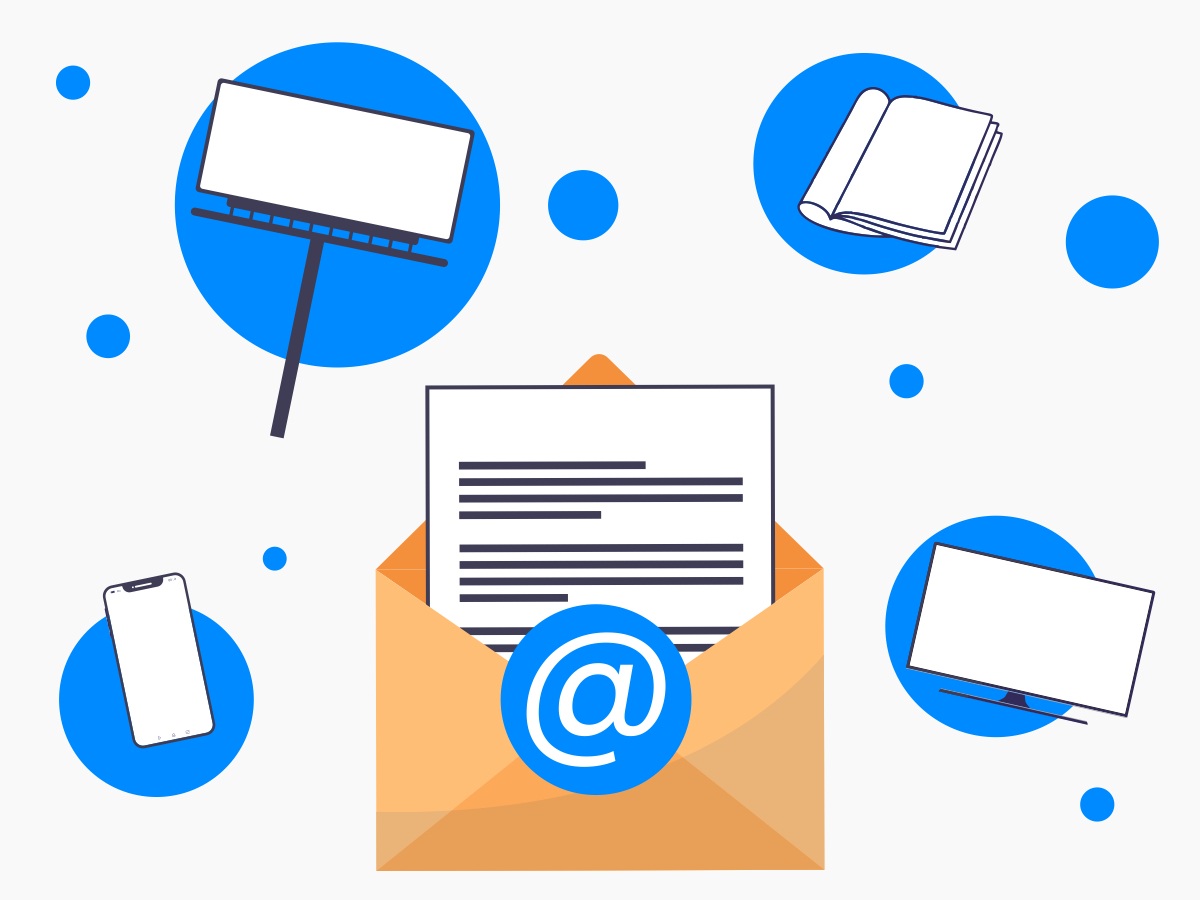Many of us have heard of the e-blast platforms, some of us may have even used them, but all of us have been bombarded by email marketing campaigns. Your spam folder is likely teeming with virus-ridden emails just waiting to be opened as well as well-intentioned sales emails that unfortunately didn’t make it past the spam filters.
Consider the number of emails you receive per day—both personally and professionally. How many of those do you ignore? How many do you mark as read despite not even opening the message? Simply to get rid of that pesky notification symbol?
One study found that by 2025, the number of email users worldwide is expected to reach a total of 4.6 billion. The number of emails sent and received per day worldwide has risen each year since 2018 when there were a whopping 281.1 billion emails sent and received. In 2027, that number is expected to soar to 392.5 billion daily e-mails.

Email marketing can be appealing as a marketing professional given its relatively low cost, automation capabilities, and the variety of user-friendly platforms available today. However, when you consider how many of us are constantly inundated with emails and how easily we’re able to tune them out, you start to wonder if it’s worth the energy.
What are some alternatives to email marketing that actually reach people where they are and resonate with them? We’re not talking about social media. Think bigger than your computer or mobile device. We’re talking about outdoor advertising. Digital billboards in city centers, static bulletins along highways, street furniture ads, bus wraps, gas station ads, you name it. This is where people are and where they’re engaged.
Read on to learn more about why outdoor advertising is an excellent alternative to email marketing and how easy it is to get started.
Why Is Email Marketing Still Popular?
Email marketing has been a go-to strategy for decades, and yes, it still has some benefits—but let’s be real: it’s also one of the most overused, oversaturated, and increasingly ineffective marketing channels out there.
Sure, email marketing allows businesses to send personalized messages straight to customers’ inboxes. It’s cost-effective, offers trackable results, and can be automated to run in the background. But does that really matter when most people are ignoring, deleting, or unsubscribing the moment they see another promotional email clogging their inbox?

Here’s why email marketing is hanging on by a thread:
- Inbox Overload – People receive hundreds of emails daily, and most marketing messages get buried or sent straight to spam. Even if an email does land in the inbox, getting someone to open it is a battle.
- Declining Open Rates – With open rates dropping across industries, businesses are fighting for attention in an already overcrowded space. Many emails never get read, let alone clicked.
- Filters & Unsubscribes – Spam filters are smarter than ever, and consumers are quick to hit ‘unsubscribe’ if they feel bombarded by promotions. One too many emails, and they’re gone.
- Lack of Visibility – Unlike a billboard or a transit ad that people physically see every day, an email only exists if someone chooses to open it. And most of the time, they don’t.
Should I Just Focus on Social Media Marketing Instead?
Social media marketing is a powerful tool—there’s no denying that. It allows businesses to engage with their audience, build a brand presence, and even go viral under the right circumstances. Organic social media is especially appealing because, in theory, it’s free exposure that can help businesses grow without a massive advertising budget.
But here’s the problem: everyone is on social media, and standing out is harder than ever. Platforms like Facebook, Instagram, and TikTok are oversaturated with content, making it nearly impossible for businesses to get noticed without paying for ads or gaming the algorithm.
Why relying solely on social media is a gamble:
The Algorithm Decides Who Sees You

Organic reach has plummeted in recent years. Even if you have a large following, your posts might only reach a fraction of your audience unless you pay to boost them. So many companies are experiencing lower engagement rates, even individual people. The truth is that social media is serving people what it thinks they want and that doesn’t always include brands.
Short Shelf Life
Unlike a billboard or a bus ad that people see for weeks, a social media post disappears in hours. If it doesn’t get engagement immediately, it gets buried. And if it does somehow see the light of day, there’s a chance that your message will be out-dated by then.
Constant Competition
You’re not just competing with other businesses—you’re fighting for attention against influencers, meme pages, viral trends, and an endless scroll of content. Social media is an increasingly noisy place. There comes a point where it’s smarter to seek out less saturated spaces.
That’s why traditional outdoor advertising remains one of the most effective ways to ensure people actually see your message. A billboard doesn’t get lost in an algorithm. A bus wrap doesn’t disappear after a few hours. Your brand stays front and center in people’s daily lives.
Check out our post: Social Media vs. Traditional Media: Pros and Cons for a deeper dive.
How does Outdoor Advertising Compare to Email Marketing?
When it comes to capturing attention and driving brand awareness, outdoor advertising and email marketing couldn’t be more different. One dominates the physical world, while the other fights for space in crowded inboxes. You might think they’re apples to oranges. In some ways, sure, but there are common factors we can compare. Here’s a side-by-side comparison:
| Factor | Outdoor Advertising | Email Marketing |
| Visibility | High—ads are placed in public spaces where people can’t ignore them | Low—emails often get buried, deleted, or sent to spam |
| Audience Reach | Broad—reaches anyone who passes by, not just existing contacts | Limited—only reaches people already on your email list |
| Lifespan | Long-lasting—billboards and transit ads stay up for weeks or months | Short—emails disappear in seconds unless opened |
| Engagement | Passive but high exposure—seen repeatedly throughout the day | Requires active participation—people must open and read |
| Trust & Credibility | High—physical ads feel more legitimate and reputable | Low—people are skeptical of email marketing and quick to unsubscribe |
| Ad Avoidance | Nearly impossible to ignore—OOH ads blend into daily life | Easy to ignore—one click and it’s gone forever |
| ROI | Strong—continuous impressions at a low cost per view | Decent—cost-effective but decreasing in effectiveness |
Outdoor advertising puts your brand in front of people without asking for permission, while email marketing relies on getting past inbox clutter. If your goal is wider reach, stronger brand presence, and fewer barriers, outdoor ads are the clear winner.
Different Types of Outdoor Advertising
With email marketing, there’s one method of delivery. That’s why as an email marketing alternative, outdoor advertising opens you up to so many other possibilities. Here’s a quick runthrough of different types of out-of-home media.
Static Bulletins
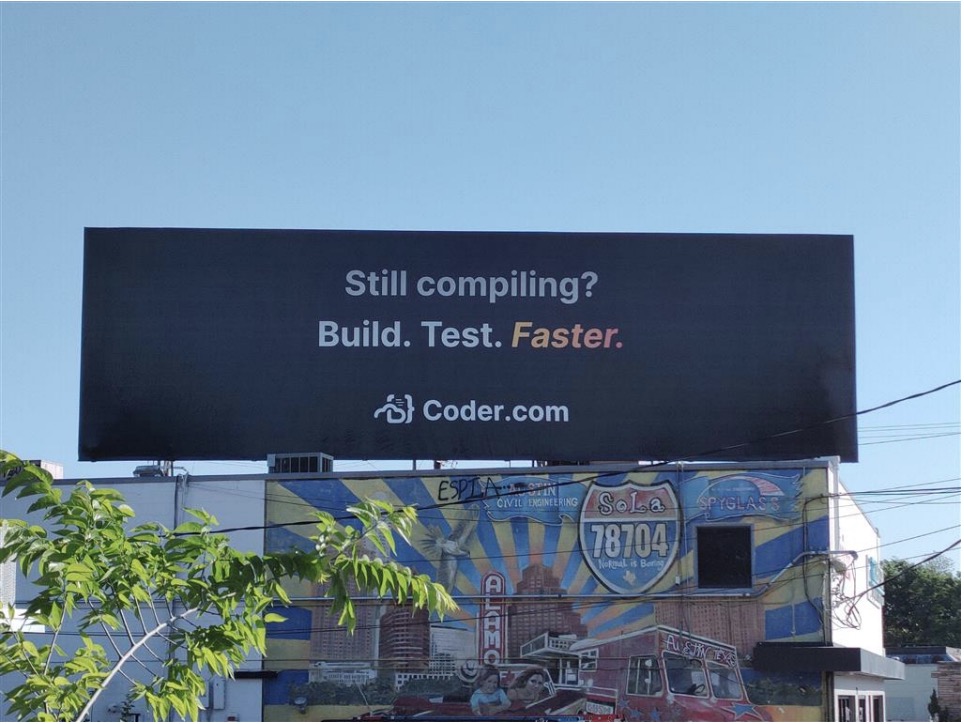
These large-scale advertisements are typically situated along highways and busy streets, capturing the attention of motorists and pedestrians alike. Billboards are ideal for creating brand awareness due to their expansive reach and high-frequency exposure. Their prominent placement ensures repeated visibility, reinforcing your message over time. Check out our post on different billboard sizes to learn more.
Digital Billboards
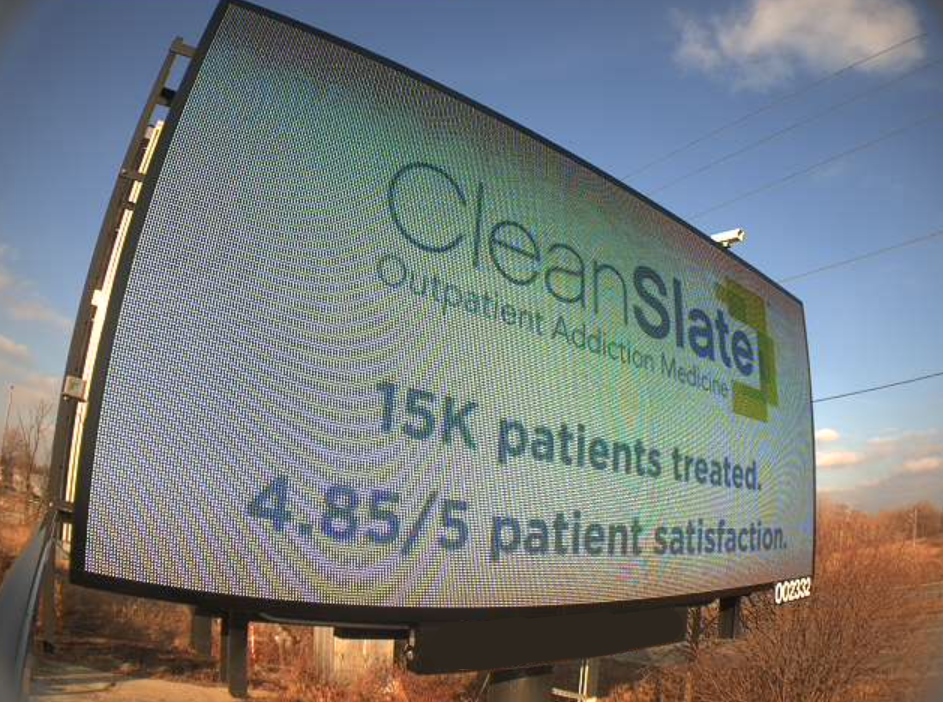
Digital billboards (also referred to as digital out-of-home or DOOH) use LED technology to display dynamic content that can be updated in real-time. The eye-catching displays are particularly effective in capturing attention, especially in urban areas where competition for consumer attention is fierce. They can also be more budget-friendly than static boards because there is no product cost (vinyl that needs to be fabricated).
Street Furniture Ads
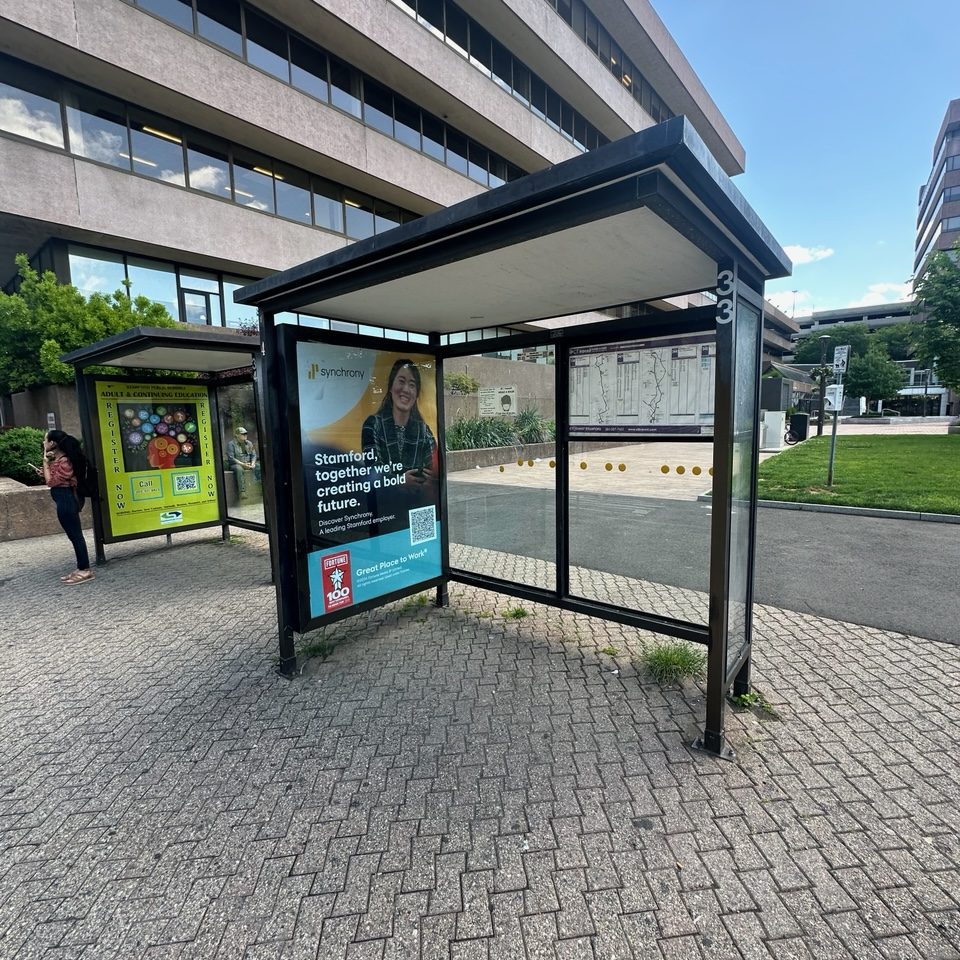
Street furniture ads integrate advertisements into urban fixtures such as bus shelters, benches, and kiosks. They offer proximity to pedestrians in high-traffic areas. This form of advertising provides a more intimate engagement, as consumers encounter these ads during their daily routines, such as waiting for public transportation or taking a rest.
Bus Wraps
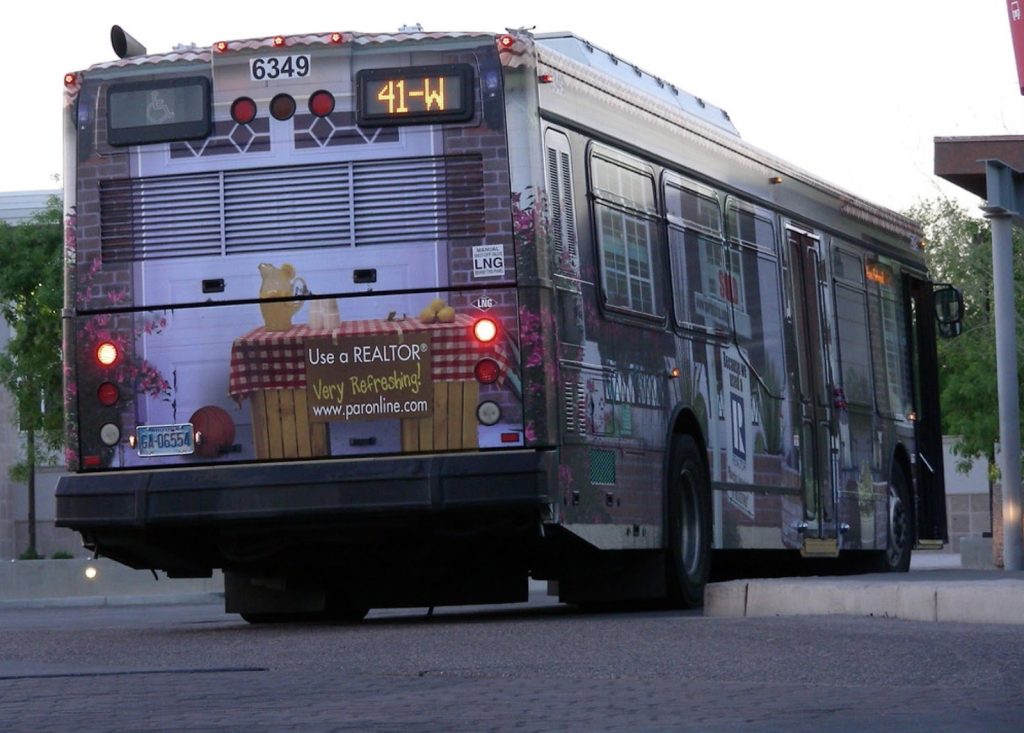
Transforming an entire bus into a moving billboard, bus wraps ensure your message travels across various neighborhoods and reaches diverse demographics. This mobile form of advertising is particularly effective in urban settings, offering high visibility and the ability to target specific routes that align with your target audience.
Place-Based Media
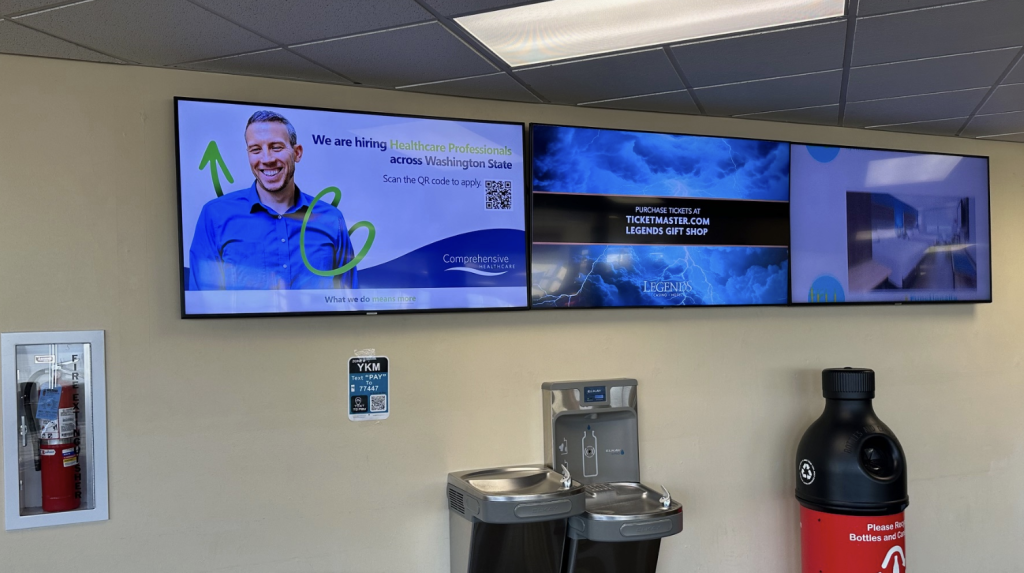
Place-based media refers to ads in specific locations where your target audience frequents, such as airports, gas stations, and shopping malls. By aligning your message with the environment, place-based media ensures relevance and enhances the likelihood of engagement. For instance, advertising in airports can target travelers, while ads in shopping malls can influence purchasing decisions on the spot.
Is OOH an Easy Email Marketing Alternative?
One of the main draws of email marketing is that there’s little learning curve. With today’s drag-and-drop platforms, premade templates, and user-friendly features, marketing teams can create and distribute emails in minutes. Is launching an outdoor advertising campaign that simple? Yes! We make sure it is.
As an outdoor advertising agency, we’ve spent years perfecting our billboard rental process. Check out our post: How to Rent a Billboard for a breakdown of the process. In some cases, we can help launch your ad in as little as two weeks from when you first contact us.
Another draw of email marketing is its straightforward analytics. You can see everything from open rate to links opened to time spent on the email. As an email marketing alternative, billboard ROI isn’t as straightforward, but that doesn’t mean it’s non-existent. Your custom billboard proposal will include data like estimated impression count, which coupled with the length of your campaign (we recommend at least 12 weeks) can help you identify the number of people likely to see your ad.
When you launch with us, we’re with you every step of the way to help ensure that you create an effective ad that resonates with your target audience. We also provide graphic design services at no additional cost.
Swap Unopened Emails for Attention-Grabbing Signage
Fill out the simple form on our website and our OOH experts will send you a custom, interactive proposal with outdoor media locations near your target area. If you’re looking for a sign to deprioritize email marketing, this is it. Stretch your marketing and advertising dollars further by choosing outdoor advertising. Never get lost in the dreaded spam inbox again
